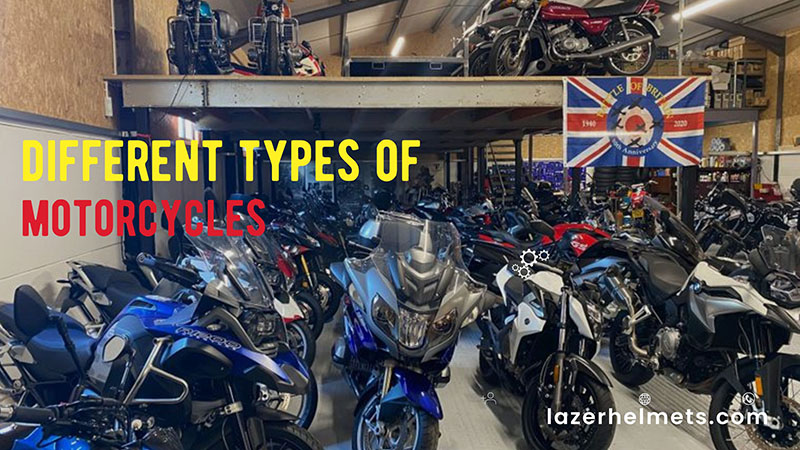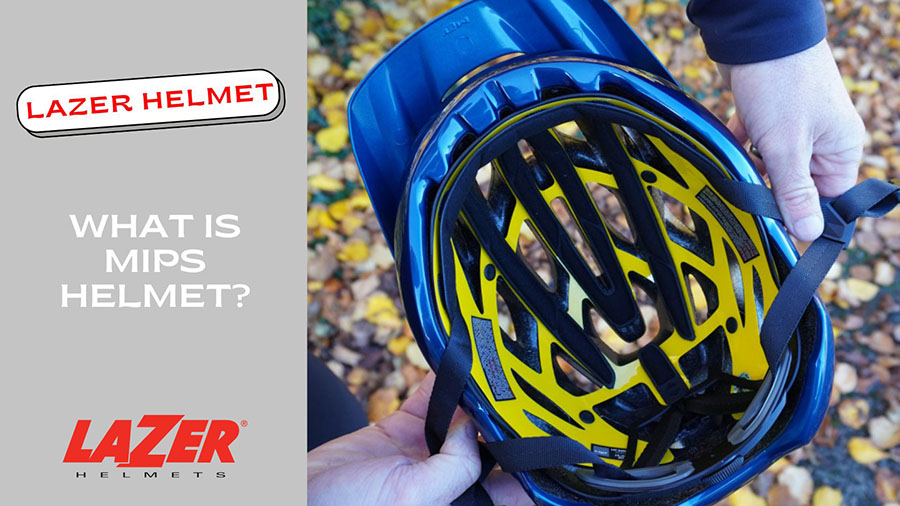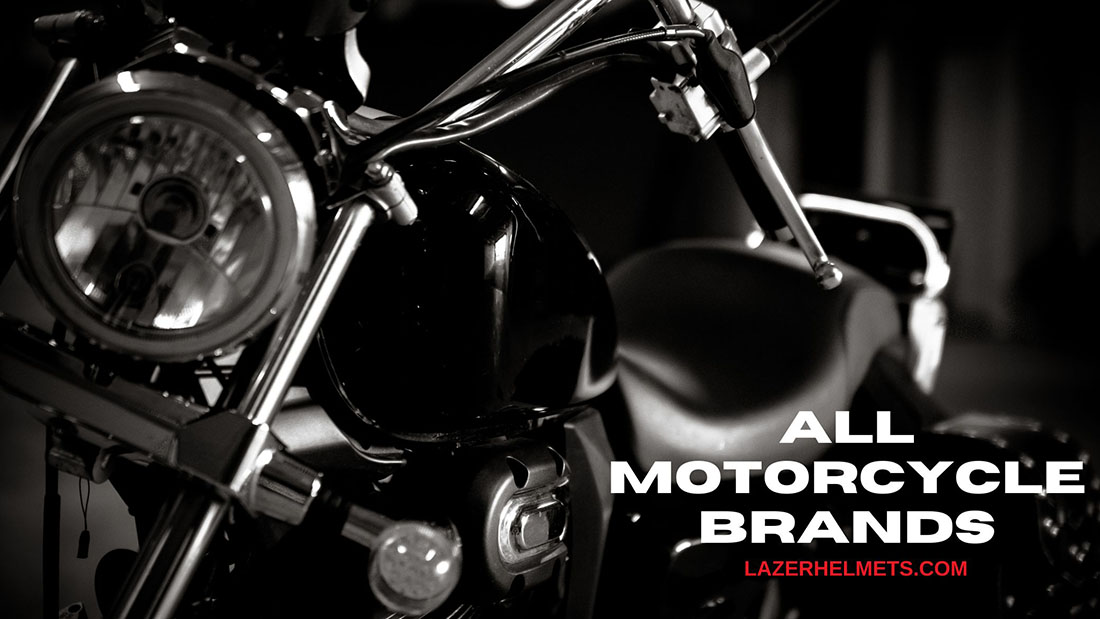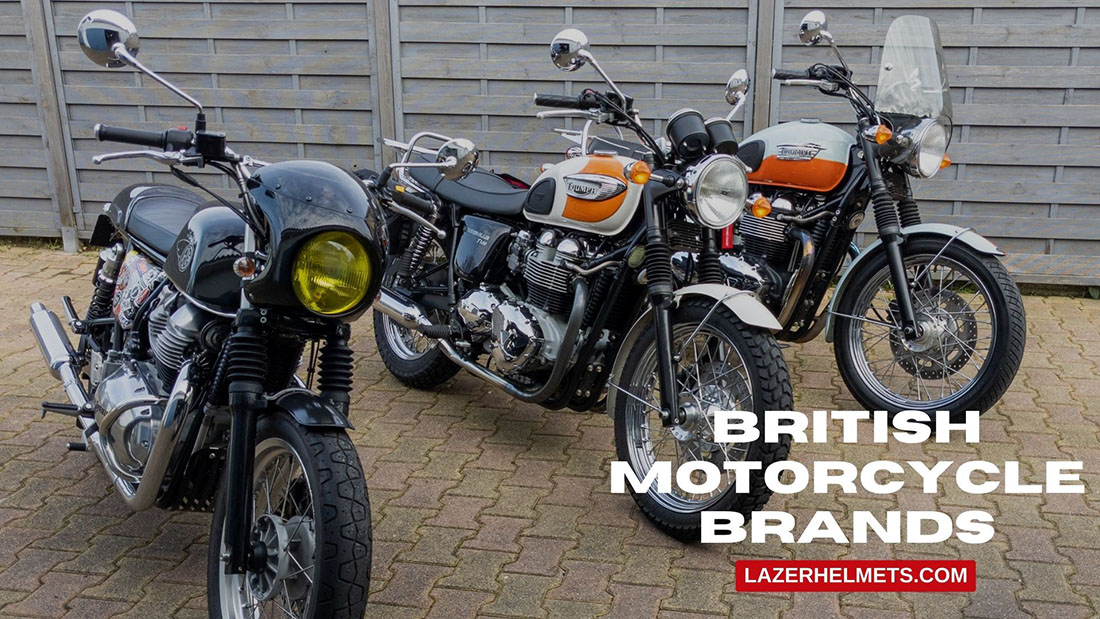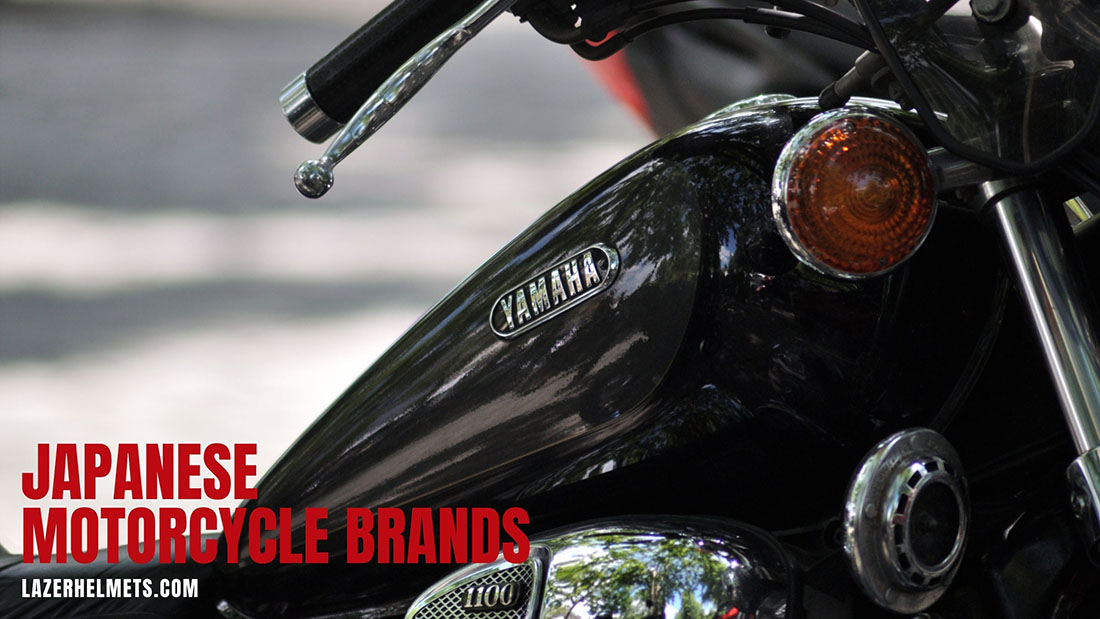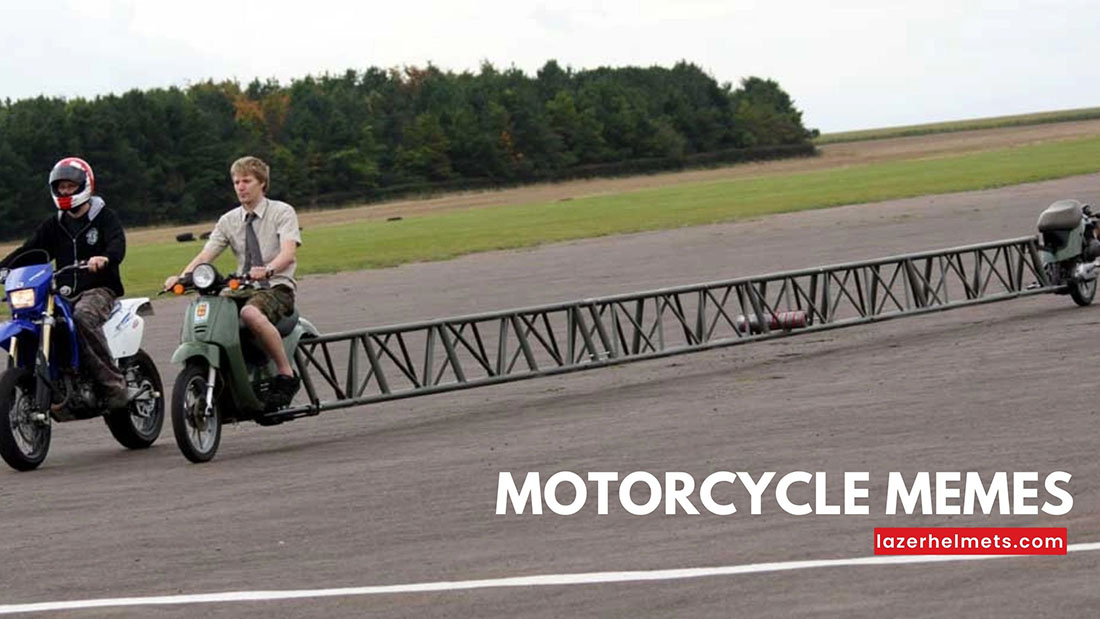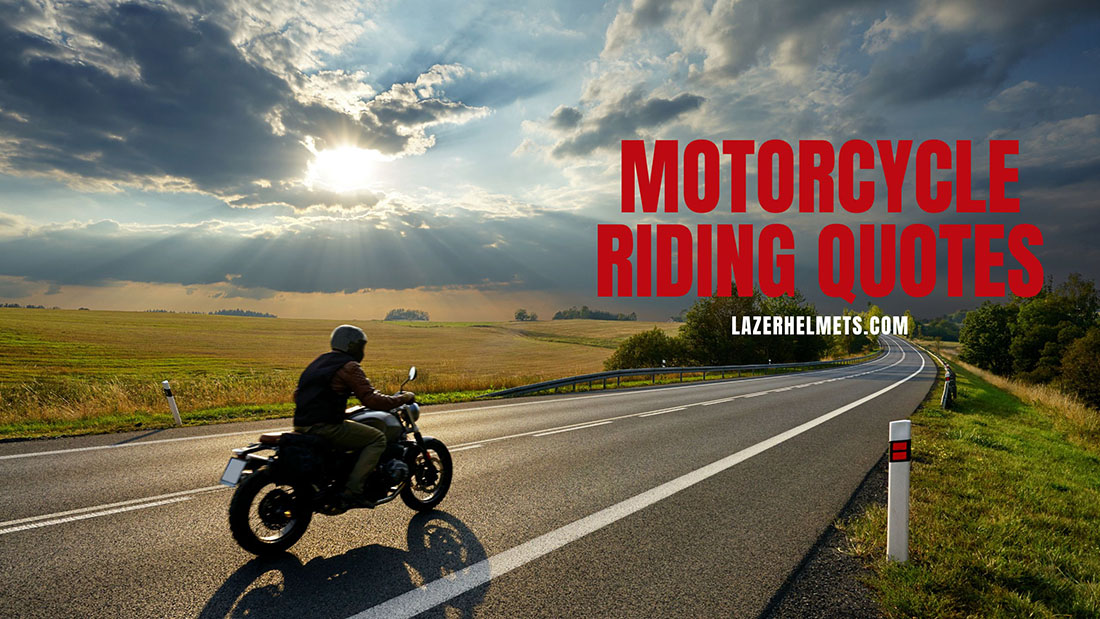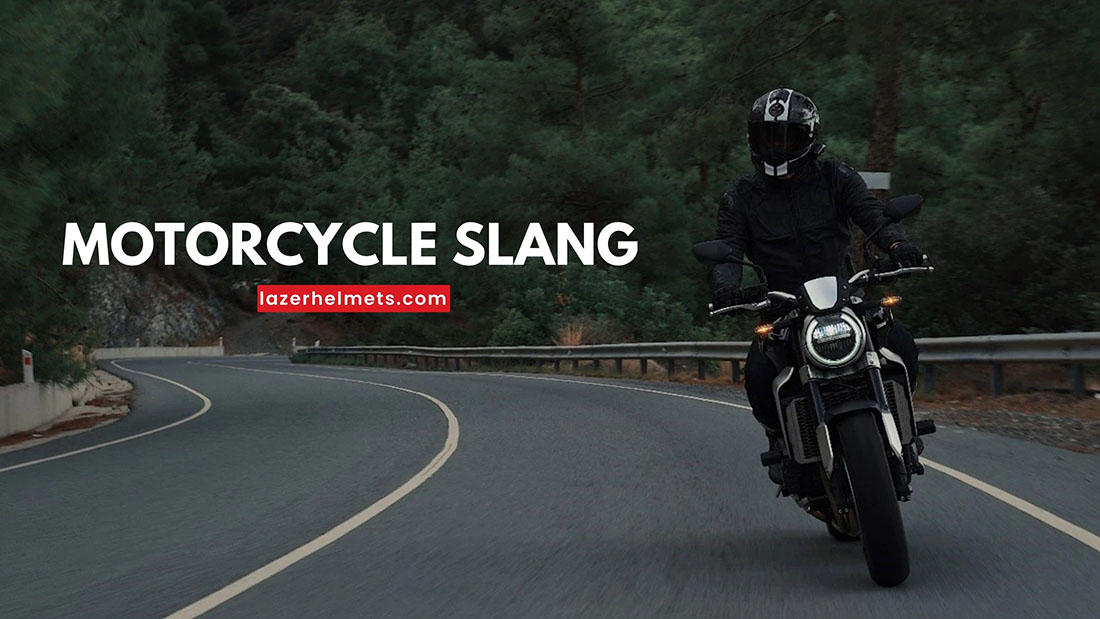Consider external factors when riding like terrains, driving purposes, and budgets, too – and you will understand why the marketplace introduces so many bike types.
So how many kinds of motorcycles are there, then? Can we single out one suitable option among so many? This article will guide you through these issues, exploring the different styles of motorcycles.
Table of Contents
What Are The Different Motorcycle Styles? 9 Main Types
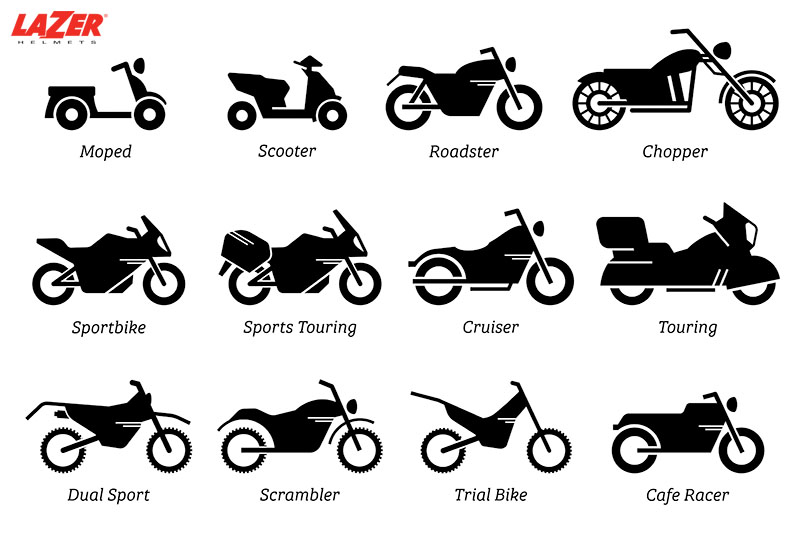
Check out the following motorcycle body styles:
1. Standards
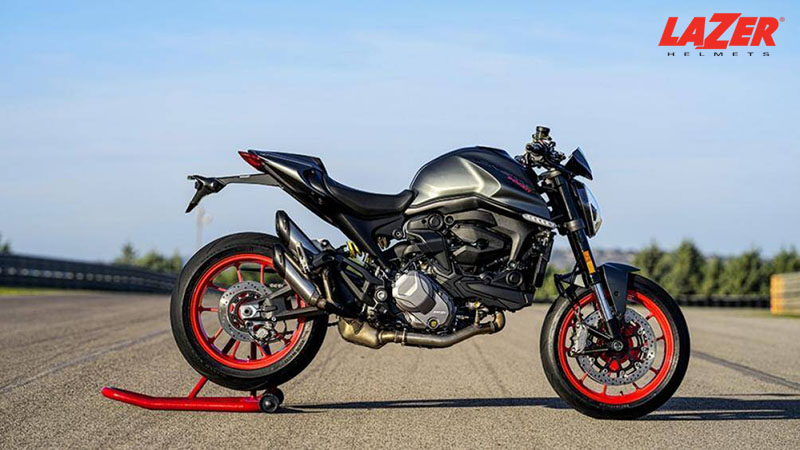
Standard bikes (or standards, roadsters, and naked) are bikes intended for daily commuting street usage. Their defining characteristics are:
- The upright riding positions (somewhere between cruiser’s reclining poses and sport bike’s forward-leaning)
- Powerband/usable torque at low engine RPMs for fuel and commuting efficiency.
These motorbikes do not often come with windscreens or fairings (hence their other titles: naked bikes). The footpegs are placed below the rider’s foot, with handlebars heightened enough to avoid overstretching issues. Therefore, your shoulders are always positioned naturally above the hip region.
Aside from their upright seatings, these bikes’ moderate engine outputs, low cost, and impressive flexibility make them an excellent choice for beginners.
2. Cruiser Motorcycles
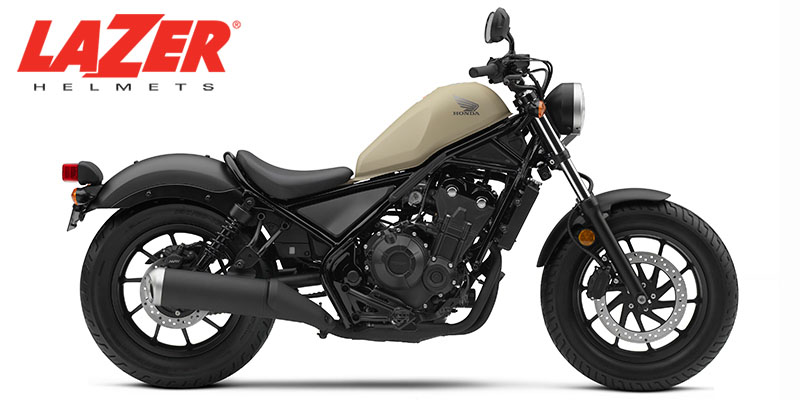
Often called “beach cruisers,” these bikes are popular for comfortable and recreational riding. For those wondering what feature sets them apart from other bike types, we would say it’s the relaxed riding position offered by their frame geometry.
Low saddles, high, wide handlebars, spacious wheelbases, and durable balloon-styled tires also further support the bike’s comfort.
Riders are also impressed by its simple design (no complex equipment or parts) that comes with a pleasant aesthetic, strong frames, and coaster brakes that utilize single-speed drivetrains.
Newer models even include innovative gear systems and brake levers; with their customers’ comfort clearly in mind, cruisers are wonderful for riders of all levels!
3. Touring Bikes
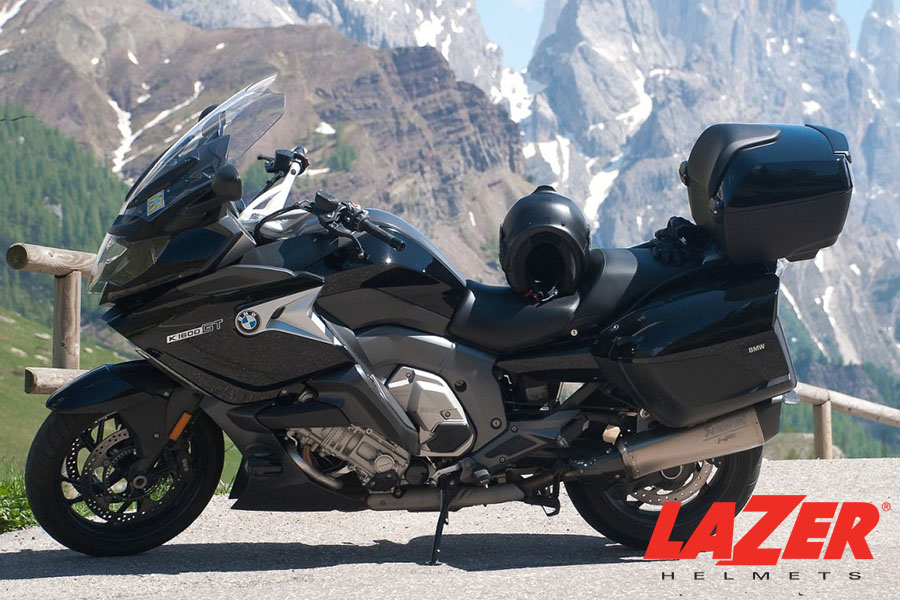
Though some may argue that we can use almost any bike type for touring purposes, there are models specifically designed for these circumstances – which come in a very self-explanatory title, “touring bikes.”
Aiming to help you cover long-distance rides, these bikes enjoy:
- Premium screens and fairings to provide good wind/weather protection
- Large-displacement, powerful engines
- Upright seating positions
- Fuel tanks with large capacities to support longer ranges between filling-up intervals.
Their passenger accommodations are wonderful, and spacious luggage storage has long become the norm. These bikes are about 860-900 lbs (wet weights) and 1300-1400 lbs (loaded with gears, passengers, and riders).
4. Sport Bikes
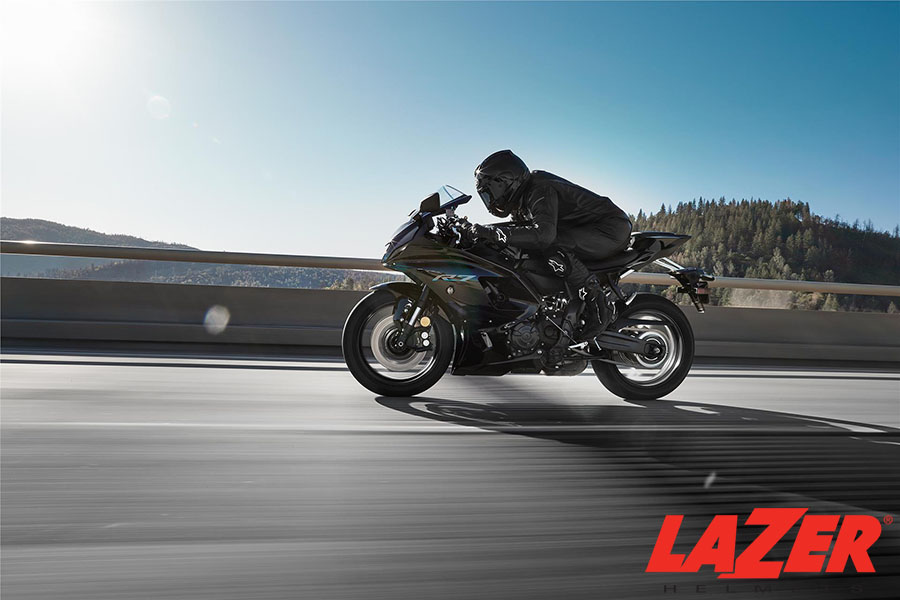
Next, we have sport bikes – a type of motorcycle optimized and designed for cornering, braking, acceleration, and speed on race roads and asphalt concrete tracks.
Compared to other bikes, comfort has a very minor say here; indeed, these sports bikes are willing to sacrifice convenience, storage, and fuel economy in exchange for performance.
Some common features of all types of sport bikes include:
- Windscreen and fairings: They deflect wind to help riders improve aerodynamics.
- Footpages: Higher and placed further back compared to standard/naked motorcycles. This design heightens your ground clearances when cornering and enables more prone positions.
- Hand controls: positioned above the gas tank. You might need to stretch your body a little to reach them, which pushes the center of gravity several notes forward.
Highway-speed forces will easily support your body weight in these poses, but lower speeds are an entirely different story. Excessive pressure on the wrists and arms might occur, causing fatigue.
5. Off-road Bikes
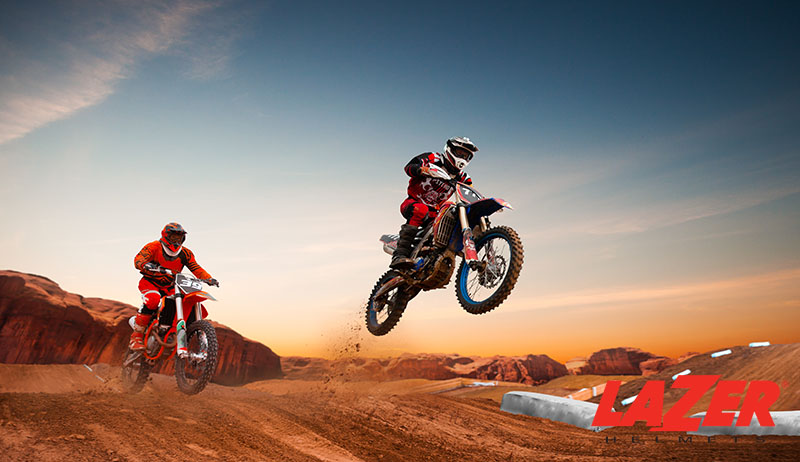
Rarer than the above options (since beginners/average riders cannot master them) are off-road/dirt bikes, produced to help users navigate in gravel, grass, mud, sand, or dirt – literally anywhere EXCEPT the city street.
Due to their versatile design that can handle everything from sand dunes to motocross tracks, it’s common to see these beasts in famous races like:
- GNCC (Grand National Cross Countries)
- Sprint Enduro
- National Enduro
- WORCS (Worldwide Off-road Championships)
Most off-road vehicles arrive with large fuel tanks, kickstands, soft suspensions, and 18-inch rear wheels. (Some models have specialized road tires, hand guards, and varied transmissions, too).
The only exception is motocross bikes – a subcategory of off-road motorcycles – which install smaller tanks and stiffer suspensions to reduce weight.
6. Dual-Purpose Motorcycles
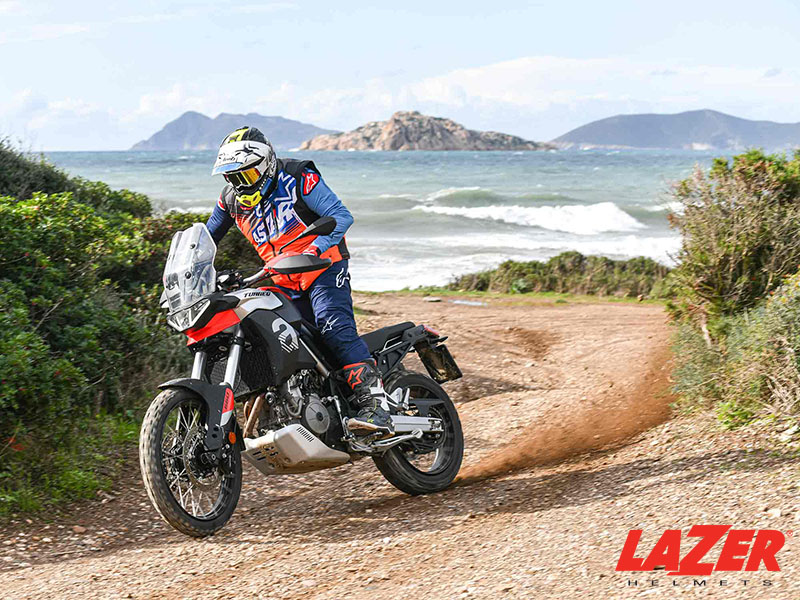
Want to find a bike that can thrive both off-road and on-road? Dual-purpose options are where to go! You can also find other common titles to refer to them, like dual-sport, on/off roads, and all-roads.
Contrary to popular beliefs that these vehicles must be illegal (how ridiculous!), dual-sport bikes, in fact, arrive with all street-legal devices, such as:
- License plate mountings
- Mufflers
- Horns
- Mirrors
- Speedometers
- Lights
Hence, you can register and license them just like any standard bike. Also, note that dual-sport motorcycles can be further broken down into three categories based on their intended purposes and weights:
- Lightweight (250-300 lbs/110-140 kg): They have good ground clearance, long suspension, high fenders, and dirt-oriented wheels. Their close resemblance to basic dirt bikes allows them to thrive on two-track streets and rough trails with a dash of pavement forays.
- Middleweight (300-350 lbs/140-160 kg). These bikes have less ground clearance and suspension than lightweights, and their tires are a peculiar compromise between pavement and dirt performance. We recommend using them for graded pavements, public roads, and trails.
- Heavyweight (more than 350 lbs/160 kgs; also called adventure-touring or adventure bikes by some companies). People who crave long-distance riding on pavements (and sometimes dirt roads) will like them, as they offer smooth tires that work wonderfully on such terrains.
See more: how much does a motorcycle weigh?
Other benefits like comfy positions, great luggage capacity, reasonable prices, and less weight (compared to touring motorcycles) only increase their popularity.
7. Scooters/Underbones/Mopeds
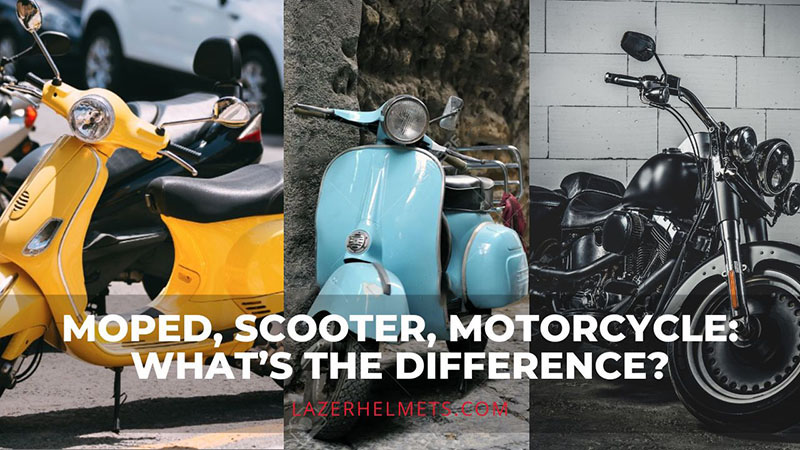
- Scooters: Though also motorized, scooters are often regarded as a different vehicle type from motorbikes.
After all, their engine sizes are smaller (only 50cc to 860cc), with enclosed body works that produce cleaner, much quieter noises than road motorcycles. Their storage space and wheels are also smaller/more limited.
So why do some people still turn to them rather than standard bikes? It turns out modern scooters feature CVT (continuously variable transmission) and automatic clutches. Beginners find them much easier to operate, lean on, and ride.
- Underbones: Descended from Honda Super Cubs, underbone motorcycles are recognized via their small displacements and step-through frames.
Rather than using floorboards (like scooters), these pit bikes use footpegs and larger wheels. Automatic clutches and gear shifters complete their mechanism.
- Mopeds: You can tell it combines motorcycle and bicycle features at first glance.
More specifically, a typical moped comprises bicycle drivetrain and motorbike engine (which is quite small – 50cc two-stroke in most cases, sometimes with electric motors). The bike’s motive power is supplied either by you or the engine (or even both).
Most countries/states go easy on moped usage; no strict licensing or laws are applied. The super low prices are another reason why these mopeds dominate the market, despite their significantly less aggressive performances than other motorbike options.
For more:
8. Tricycles
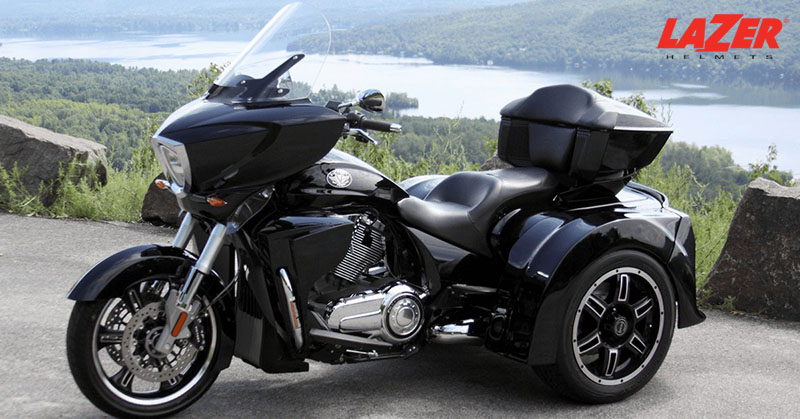
Motorcycles and two-wheelers are often interchangeable terms. But do you know that several motor-driven tricycles are also classed as motorbikes? Even registration laws and authorities put them in equal positions with two wheels, applicable for licensing purposes.
For better curve negotiation, the wheel design and mechanism vary across models. By illustration:
- Honda Gold Wing ranges: the front wheels lean, while the rear wheels do not
- Piaggio MP3: both front and rear wheels lean
- Yamaha Niken: three leaning wheels with smaller track widths
9. Utility Bikes
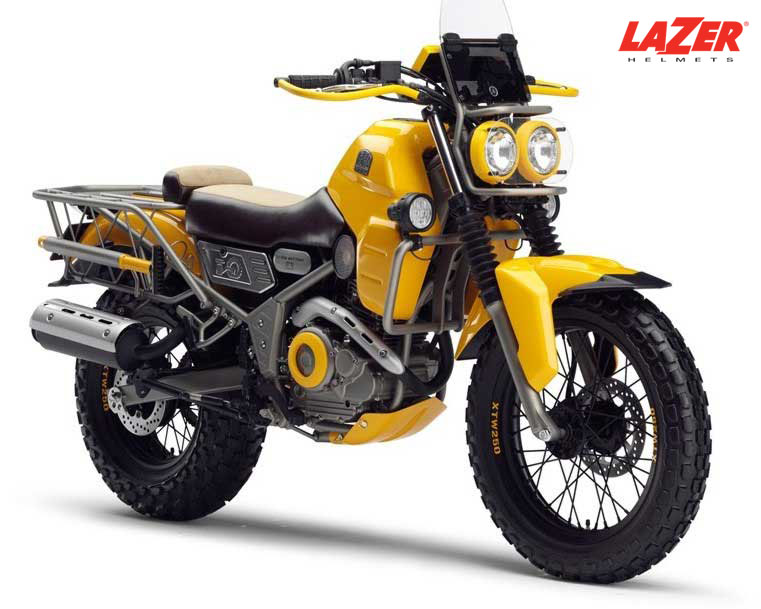
(Other names: European, classic, city, Dutch, urban street bikes)
These bikes can handle very slow and short rides (road riding that does not exceed 3 to 4 miles) across flat areas in mild-to-cold weather conditions. Unlike mountain, racing, and touring types, they are not suited for competition and recreation.
Feel free to wear normal clothes and no supportive gear when using them.
How to Choose Your Beginner Motorcycle Wisely? Buying Guides and Tips
1. Look for Proper Weights and Fits
A common step that most beginners ignore! Do not follow in their footsteps – unless you want to regret your buying decision. Knowing how the motorbikes fit your body will guarantee proper ergonomics, better bike control, handling, and a more comfortable ride!
Some signals to look out for:
- Your arm can easily reach the handlebar, turn, and flip it without saddle shifts.
- Your feet can rest on the footpegs comfortably.
- You can put your toes flat against the ground, reaching/operating the brakes and controls with ease.
Double-checking all these little details brings you several steps closer to a successful purchase!
2. Contemplate Its Horsepower
How about the motorbike power, then?
In our opinion, options below 600cc engines are terrific starting points for beginners. New riders certainly do not want to hop on powerful vehicles immediately since that poses many dangers – your inexperience might even put you in deadly accidents!
So weigh your riding skills carefully. Of course, for average/advanced riders, powerful bikes above 600cc are great contenders.
3. Determine Your Style/Try Out The Bike Before Buying
Devoted motorists love expressing their identities via motorcycle designs – which should portray their defining lifestyles and trademarks as clearly as daylight. Hence, do not hesitate to spend a lot of time looking for a great motorcycle style!
And, of course, trying the motorbike before buying is a must to grasp how it performs and caves under your fingertips. Is it the experience you need? Does the bike fit your style and techniques?
4. Used or New? Budget Wisely
The beginner bike is not the only thing you need to spend money on. Other gears and equipment are necessary to provide a pleasurable and safe experience: boots, gloves, riding pants, jackets, helmets, and so on. Learn to distribute your budgets rationally!
Also, do not forget this important question: which is better for beginners, a used or a new bike?
Though the ultimate answer depends on each rider, our favored option is a used motorbike of good quality. Since future practices will arrive often, scratches and dings are inevitable. Wait until you have outgrown this bike before letting your eyes wander to newer ones.
FAQs
What Is The Most Popular Motorcycle Type?
Cruisers stand second to none for its versatility and comfort.
What Motorcycle Type Is Best For Beginners?
Scooters, standards, and cruisers are a dependable trio for newbies.
What Is A Small Motorcycle Called?
It’s called a moped.
What Is A Slang Word For A Motorcycle?
In daily conversation, you might hear others calling a motorcycle as: beasts, sled, ride, the old lady, my precious, or my sweetheart.
Conclusion
Our expert team has successfully introduced all types of motorcycles to help you make better purchase decisions.
Keep in mind other buying tricks and tips detailed in this article, and you will never have to worry about misspending your hard-earned money!
There are still chances that certain aspects might not have been covered; after all, so many common types of bikes are available. Please DM us or comment if you still need more support.
View more:

